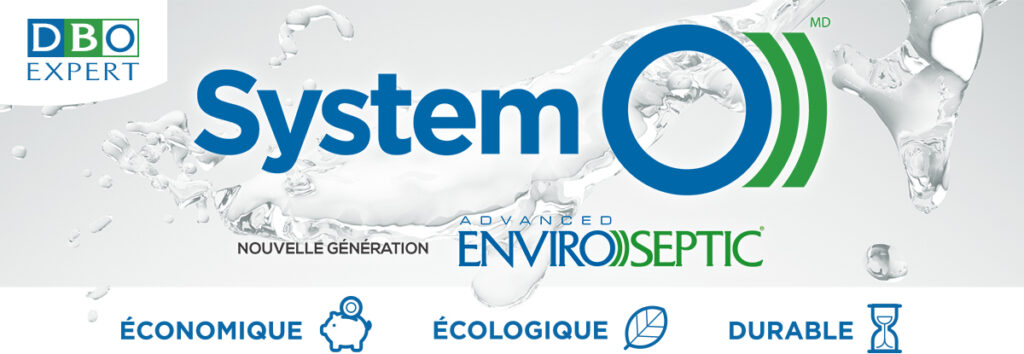Specifications of the wastewater treatment system at a holiday camp
| Year | 2014 |
| Country | France |
| Distributor | DBO Expert - France |
| Treatment Capacity | 27 m3 |
| Soil Analysis | Permeable |
| System Surface Area | 520.3 m2 |
| Treatment results available upon request | |

Site Particularities
There are large fluctuations of wastewater at this site. There are many organized activities that bring large numbers of youth to the center.
CONTEXT
This project consists of installing a wastewater treatment system at an institutional building that organizes activities for youth. During these activities, there are many people on site, resulting in lots of wastewater. It is located in a small village in a valley surrounded by mountains in France. This System O)) uses a Low Pressure Distribution System.
- primary treatment
The System O)) is preceded by a primary treatment. This primary treatment consists of two septic tanks, each with an effective volume of 35,000 L, and a 5,000 L grease trap to remove large amounts of fats that come from the kitchen. Inside the septic tank, the wastewater separates into layers as the fats float to the top and the solids sink to the bottom.
Distribution
The effluent of the septic tank is evenly distributed between the two cells of Advanced Enviro))Septic pipe rows. The proper functioning of the System O)) depends on a uniform distribution of wastewater between the Advanced Enviro))Septic pipe rows.
This is accomplished by using a Low Pressure Distribution System that injects the wastewater directly into the Advanced Enviro))Septic pipes. The effluent of the system is collected in a watertight membrane.
- secondary treatment
This System O)) uses 2 cells consisting of 20 rows of 6 Advanced Enviro))Septic pipes, for a total of 240 pipes. The wastewater is pumped along the length of the rows where it is treated by bacteria living in the pipes and in the filter sand during the infiltration process.
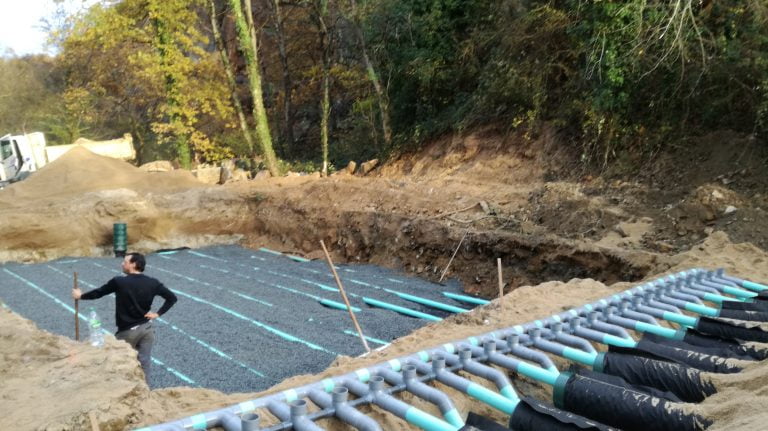
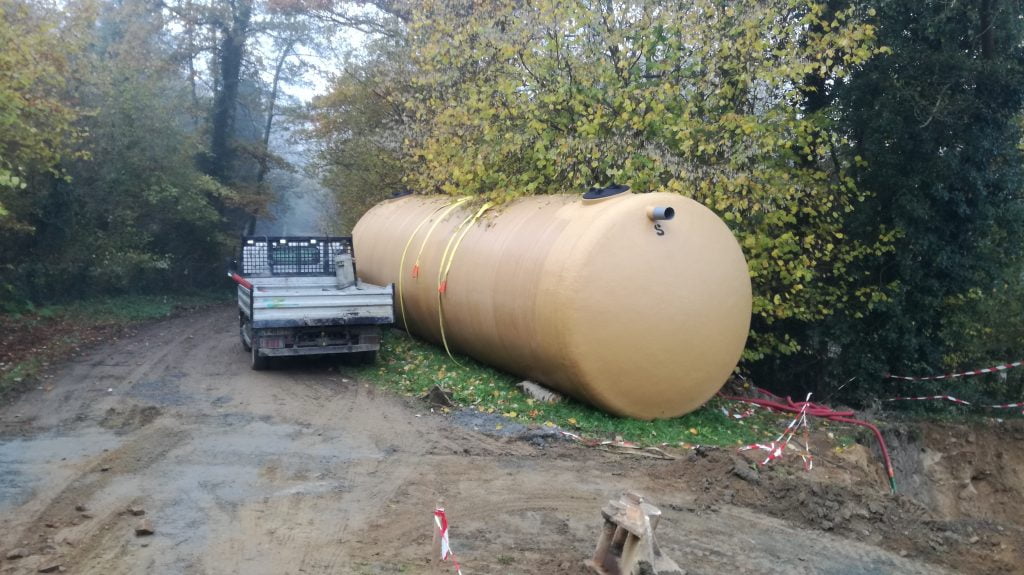
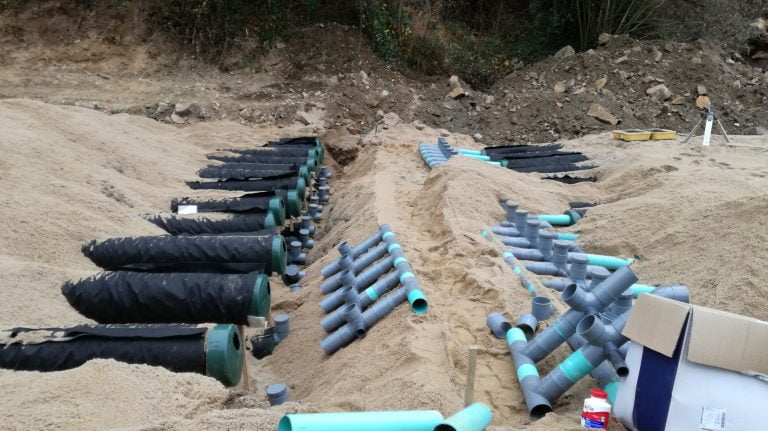
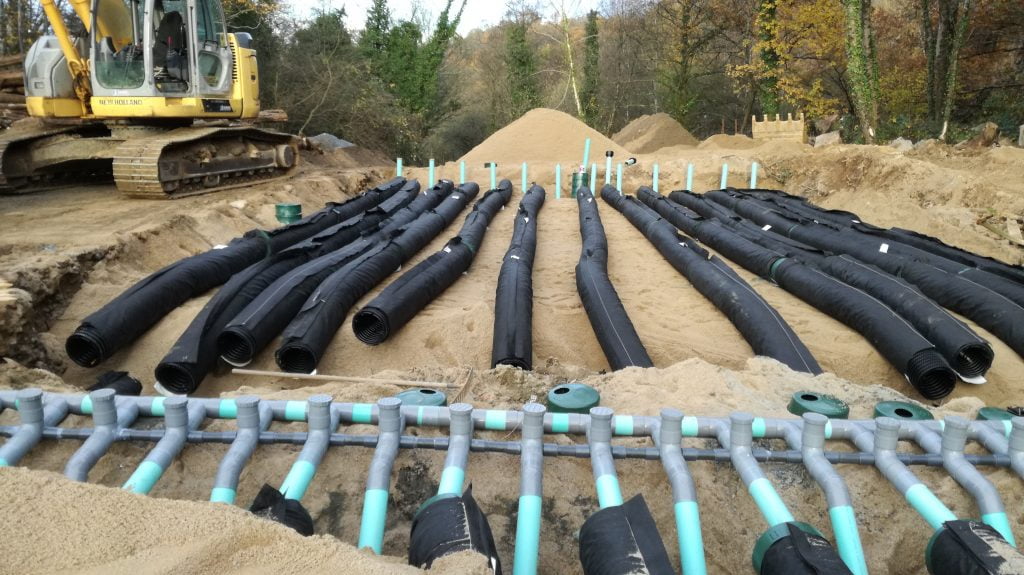
- Economic Advantages
By using a System O)), the client saves money in the long term. A System O)) costs roughly the same as a conventional system, but has a lifespan of over 30 years. Conventional installations can start to fail after 15 years even if they are treated well. The System O)) doesn’t require maintenance and there isn’t any filter media to
change or parts that can break.
- Environmental Advantages
The treated water leaving the System O)) has, on average:
- 10.5 times less five-day carbonaceous biochemical oxygen demand (CBOD5),
- 7.3 times less total suspended solids (TSS), and
- 49.6 times less fecal coliform
than a conventional installation.
The treatment process of a conventional installation occurs in the native soil, while System O)) treats the wastewater within the system, protecting the native soil.



